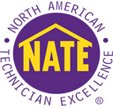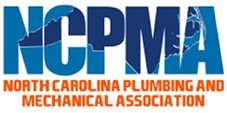
HVAC systems are integral to maintaining a comfortable and healthy home. Did you know that regular inspections and maintenance can prolong the life of your system, improve energy efficiency, and prevent costly repairs? But when is the best time for an HVAC inspection? Here’s what you need to know.
Understanding the Importance of HVAC Inspections
An HVAC inspection involves a thorough check of your heating and cooling system. This includes assessing the condition of the furnace, air conditioner, ductwork, thermostats, and other components. During an inspection, technicians will identify potential issues, perform necessary cleanings, and suggest repairs or upgrades. Regular inspections ensure your system runs efficiently and safeguard it against unexpected breakdowns.
Optimal Timing: Spring and Fall Seasons
The best times to schedule your HVAC inspections are spring and fall. Here’s why these seasonal service appointments are ideal:
Spring: Preparing for Summer Heat
Air conditioner maintenance in spring focuses on preparing your unit for high usage during summer. This involves cleaning or replacing air filters, checking refrigerant levels, inspecting the condenser and evaporator coils, and ensuring all components function correctly. Here’s why spring is a perfect time for AC service:
- Beat the Rush: Spring is less busy for HVAC technicians, meaning easier scheduling and possibly lower rates.
- Preventive Maintenance: Identifying and fixing minor issues during spring can prevent major breakdowns in the summer heat.
- Energy Efficiency: A well-maintained air conditioner runs more efficiently, reducing energy bills during the hot months.
Fall: Getting Ready for Winter
Fall is the time to focus on your heating system. It ensures your unit is in tip-top shape, ready for cooler temps outside and increased heating system use inside. It includes checking the motor, blower, moving parts, filet, and electrical. Here's why a fall HVAC tune-up is crucial:
- Safety First: A thorough inspection ensures heating systems, especially furnaces, operate safely, reducing the risk of carbon monoxide leaks.
- Comfort During Cold Months: Ensuring your heating system is in top shape before winter guarantees a warm and comfortable home.
- Efficiency and Longevity: Regular maintenance enhances the efficiency and prolongs the lifespan of your heating system.
What Does an HVAC Inspection Include?
An HVAC inspection checklist typically includes:
- Inspecting and Cleaning Components: This includes filters, coils, blower parts, and condensation lines.
- Checking System Controls: Ensuring the system starts, operates, and shuts off properly.
- Inspecting Fuel Connections and Pressure: For heating systems, this is crucial for safety and efficiency.
- Evaluating Thermostat Settings: To ensure comfort and energy efficiency.
- Checking Electrical Connections: Tightening connections and measuring voltage and current on motors.
Regular HVAC inspections are crucial for maintaining your home’s comfort, safety, and efficiency. Scheduling these inspections seasonally—air conditioner maintenance in the spring and heating system checks in the fall—ensures your systems are ready for the extreme temperatures of summer and winter. These inspections extend your HVAC system’s life and help identify potential issues before they become major problems, saving you time and money in the long run. Don’t wait to get your spring AC maintenance on the calendar. Contact G+S Heating and Air to learn more about maintenance plans that make it easy to manage seasonal scheduling.












